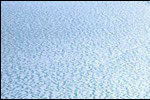
| Home
Mission 2007 Team Members Research Sources Progress Journal |
|
Progress Journal Nov. 2, 2003 - Our entire team met in Barker Library
to find the impacts of roads and pipelines. See the research page
for findings. Effect #1 - effects the Polar bears - Solution --drilling in summer Effect #2 - effects the Caribou - Solution -- drilling in winter (choosing one solution will affect the other species) So try to optimize based on .....???? You cant do it on value of the animal!!! ie. 10 polar bears vs 100 caribou - How to choose which is more important? VARIABLES -- Some things which could help us make a decision. (and some questions we need to answer in order to make an evaluation) - "Keystone species" o Which are these o What else do they affect? - Which species are endangered? - Time period? o Recovery period of a species COMPARATIVE ANALYSIS -- maybe we should try this instead!!! - not quantity, but quality - look at big picture/interactions VARIABLES TO CONSIDER: (we need to know these for each species of concern....is this possible?) o habitat range of species o species' place in food chain (predator/prey relationships) o climate/atmostphere effects species how? o temperature increase effects species how? o long-term recovery ability? Oct. 24, 2003 - Dylan, Rashida and Zehra met
at MacGregor House at 7:30. They came up with some points for the Status
Presentation according to the structure that Alex had mentioned in wednesday's
meeting. It was a very good brainstorm session that should happen more often. Oct. 15, 2003 - During team meeting we discussed our
team's responsibilities, focusing on how we are going to coordinate the
transfer of information between other teams and ourselves. These are the
meeting notes: PART 1: Responsibility Flow Chart for Mission 2007 Teams 
We discovered that, due to the nature of Team 4’s topic, Exploration/Production Impact Evaluation Strategy, we act as a link between all of these groups. In order to evaluate the strategies presented to us by other groups most effectively and provide feedback as well, we decided to take a “bottom up” approach to how we will divide up the work. Instead of trying to figure out what could possibly have adverse effects on the environment, we would instead find out all of the possible elements that could be impacted pertaining to ANWR, such as soil and water quality, and apply our findings to the information that the other Mission 2007 teams would give us. PART 2: CATEGORIES The next step was to figure out exactly what categories into which we should subdivide ourselves in order to cover all possibly areas that could be impacted environmentally. Our initial list included the following: Effects/Variables: · Animals dying · Soil degradation · Permafrost alteration · Air pollution · Fire · Noise pollution · Geology · Water · Plants In considering these effects, we noticed that many of them overlapped or were affected by something else on the list. Thus, we devised a second list that discussed these effects better: Abiotic: 1. Atmosphere a. Energy b. Chemistry c. Dynamics 2. Soil 3. Water All of the above are encompassed by the structure of a system. Biotic: 1. Flora 2. Fauna a. Species i. behavior ii. population iii. relationships 3. Bacteria 4. Protista 5. Fungi After this list was created, we chose an area to primarily focus on for research. Holly is in charge of geology and soil quality pertaining to ANWR, Rashida, animals, Zehra, the ecosystem, and Dylan and Farah, exploration and production effects. Oct. 10, 2003 - During Friday class we met with Team
E to discuss our relationship and responsibilities. After we met
with Team E, responsible for devising hte best oil exploration and extraction
strategies, we came up with the following: Oct. 6, 2003 - Coordinated with Team 5 to lead the entire class on a discussion of Perspectives 3. |



| Last updated: Nov, 8 2003 (3:25 am) | Email Team 4 - m2007-4@mit.edu |